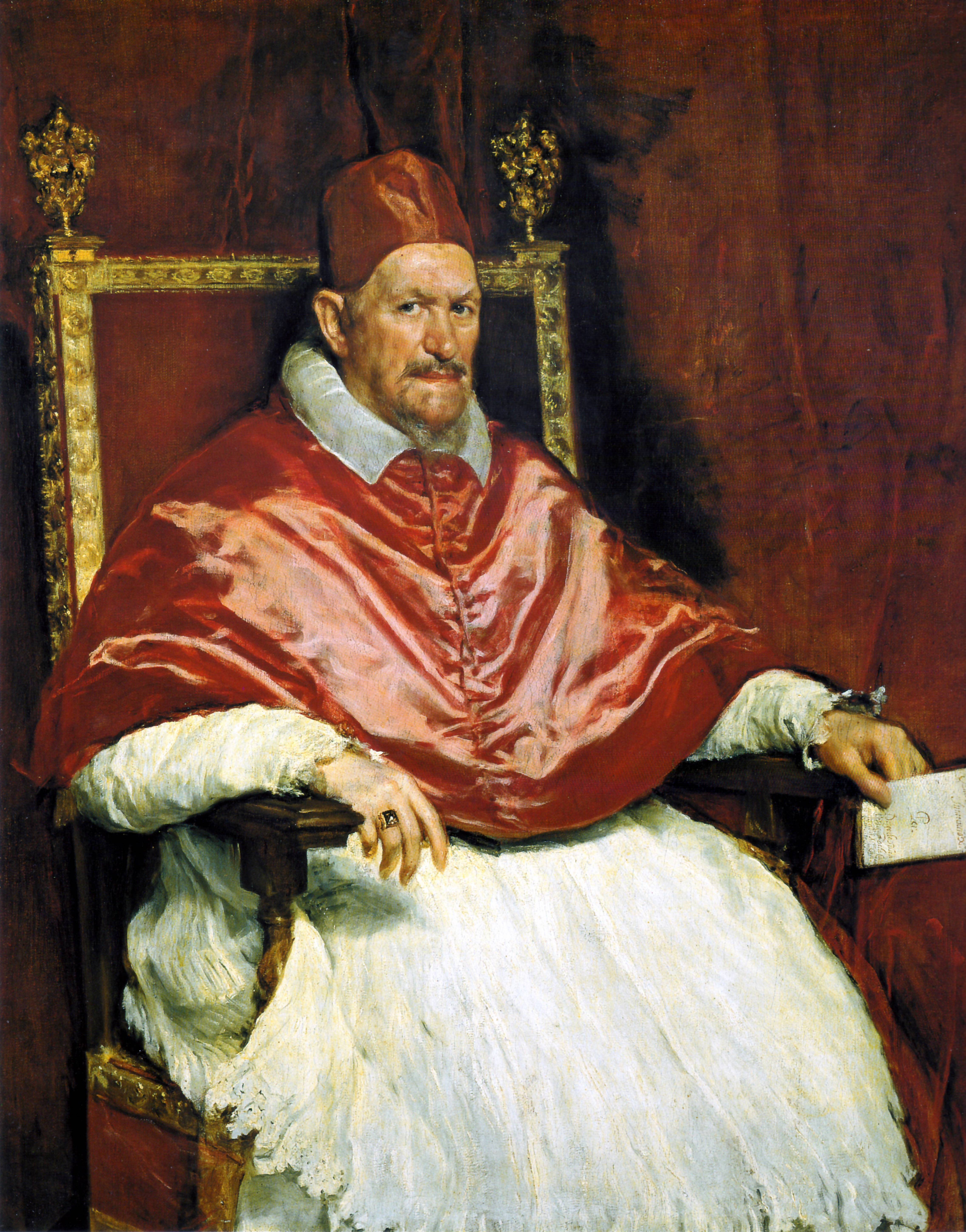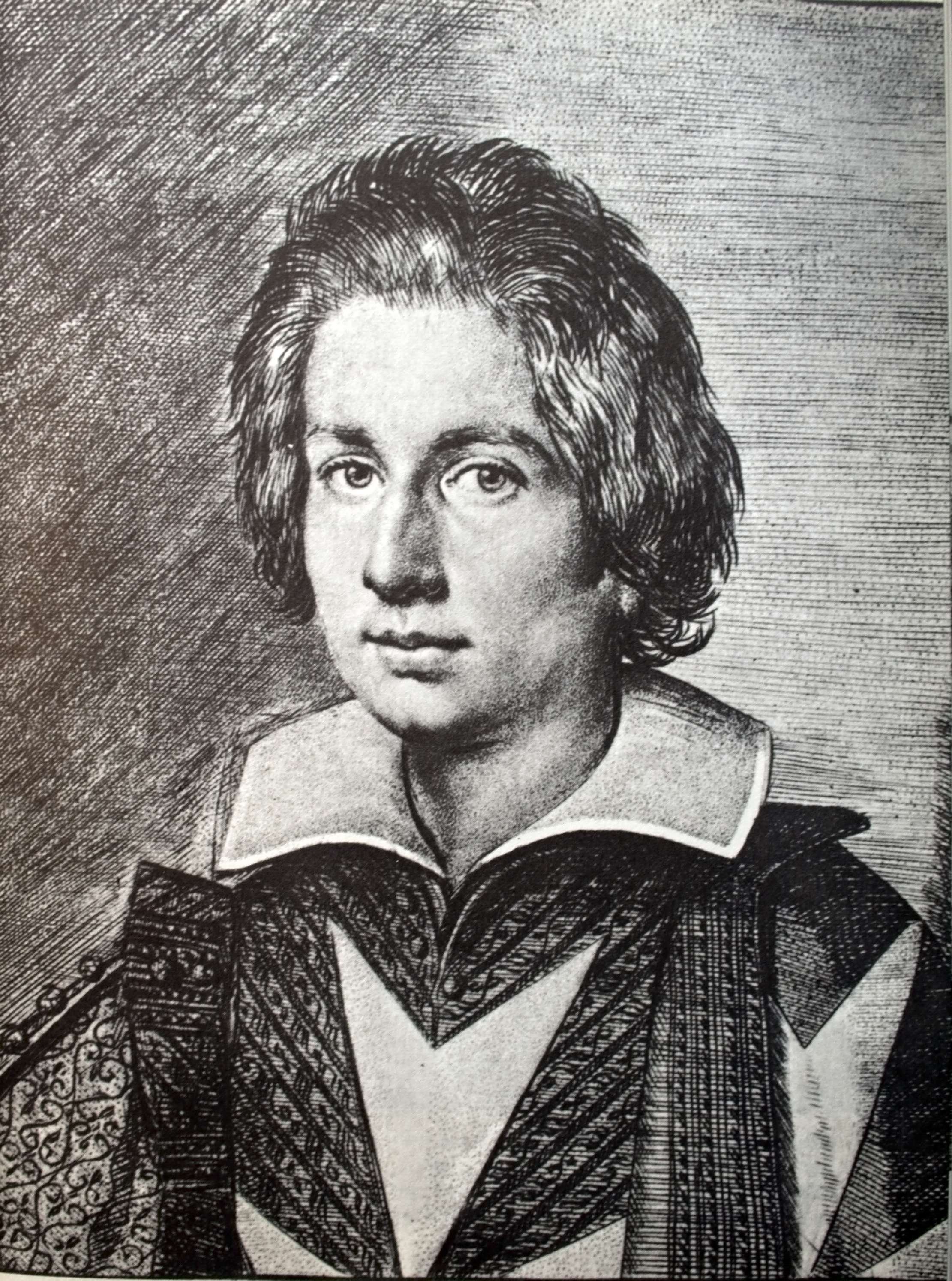|
Luigi Capponi
Luigi Capponi (1582 – 6 April 1659) was an Italian Catholic cardinal who became archbishop of Ravenna. Biography Capponi was born in 1582, the son of Senator Francesco Capponi and Ludovica Macchiavelli. The Capponi family had extensive links to Italian political circles and to senior members of the Catholic Church. He was educated at the Archgymnasium of Rome where he received a doctorate and became a papal prelate and then treasurer of the Apostolic Chamber. He became a close friend of Cardinal Bonifazio Bevilacqua Aldobrandini. On 24 November 1608 he was elevated to cardinal and was installed as cardinal-deacon of Sant'Agata dei Goti. In 1614, he was appointed legate in Bologna but fell ill and Cardinal Giulio Savelli was appointed in his place. When he recovered he was appointed cardinal-deacon of Sant'Angelo in Pescheria. In 1621, he participated in the one-day-long papal conclave which elected Pope Gregory XV. The following month, Capponi was elected archbishop of Ravenn ... [...More Info...] [...Related Items...] OR: [Wikipedia] [Google] [Baidu] |
Cardinal (Catholicism)
A cardinal ( la, Sanctae Romanae Ecclesiae cardinalis, literally 'cardinal of the Holy Roman Church') is a senior member of the clergy of the Catholic Church. Cardinals are created by the ruling pope and typically hold the title for life. Collectively, they constitute the College of Cardinals. Their most solemn responsibility is to elect a new pope in a conclave, almost always from among themselves (with a few historical exceptions), when the Holy See is vacant. During the period between a pope's death or resignation and the election of his successor, the day-to-day governance of the Holy See is in the hands of the College of Cardinals. The right to participate in a conclave is limited to cardinals who have not reached the age of 80 years by the day the vacancy occurs. In addition, cardinals collectively participate in papal consistories (which generally take place annually), in which matters of importance to the Church are considered and new cardinals may be created. Cardin ... [...More Info...] [...Related Items...] OR: [Wikipedia] [Google] [Baidu] |
San Lorenzo In Lucina
The Minor Basilica of St. Lawrence in Lucina ( it, Basilica Minore di San Lorenzo in Lucina or simply it, San Lorenzo in Lucina; la, S. Laurentii in Lucina) is a Roman Catholic parish, titular church, and minor basilica in central Rome, Italy. The basilica is located in Piazza di San Lorenzo in Lucina in the Rione Colonna, about two blocks behind the Palazzo Montecitorio, proximate to the Via del Corso. History The basilica is dedicated to St. Lawrence of Rome, deacon and martyr. The name "Lucina" derives from that of the Roman matron of the AD 4th century who permitted Christians to erect a church on the site. Pope Marcellus I supposedly hid on the site during the persecutions of Roman Emperor Maxentius, and Pope Damasus I was elected there in AD 366. Pope Sixtus III consecrated a church on the site in 440 AD. The church was denominated the ''Titulus Lucinae'', and is so mentioned in the acts of the synod of AD 499 of Pope Symmachus. The church was first reconstructed by ... [...More Info...] [...Related Items...] OR: [Wikipedia] [Google] [Baidu] |
Villa La Pietra
Villa La Pietra is a renaissance villa in the hills outside Florence, in Tuscany in central Italy. It was formerly the home of Arthur Acton and later of his son Harold Acton, on whose death in 1994 it was bequeathed to New York University. The villa is now home to NYU Florence. History Villa La Pietra was bought and somewhat modified in the 1460s by the Florentine banker Francesco Sassetti. In 1545 or 1546 it was sold to the . The villa was given its present form in the seventeenth century by the cardinal Luigi Capponi, possibly with the assistance of Carlo Fontana. During the brief period from 1865 to 1871 when Florence was capital of the Kingdom of Italy, the villa was used as the embassy of Prussia. In 1903 Arthur Acton, an Anglo-Neapolitan art dealer, rented it after his marriage to Hortense Mitchell, the daughter of John J. Mitchell a banker from Chicago, Illinois. With money from her family, the couple bought the villa in 1907. The villa contains the art col ... [...More Info...] [...Related Items...] OR: [Wikipedia] [Google] [Baidu] |
François De La Boullaye-Le Gouz
François de La Boullaye-Le Gouz (1623 – 1668/1669?), was a French aristocrat and extensive traveller. He published a French-language travelogue, enriched with firsthand accounts of India, Persia, Greece, the Middle East, Denmark, Germany, Netherlands, England, Ireland, and Italy. It is considered one of the first true travel books, in that it contains useful information for actual travellers. In 1647, he visited Viterbo and met with Italian nobleman, Federico Capponi. When he returned to Italy in 1650, Federico had died so La Boullaye met with his relative, Cardinal Luigi Capponi and dedicated the first printed edition of his work to the Cardinal.''Muqarnas 21 Essays In Honor ff J.M. Rogers: An Annual On The Visual Culture Of The Islamic World'' (compiled) by Gülru Necipoğlu, Doris Behrens-Abouseif and Anna Contadini (2005) The preface includes an illustration of the adventurer presented the work to Capponi. He died in Ispahan, Iran Iran, officially the ... [...More Info...] [...Related Items...] OR: [Wikipedia] [Google] [Baidu] |
Papal Conclave, 1655
The 1655 papal conclave was convened following the death of Pope Innocent X and ended with the election of Cardinal Fabio Chigi as Alexander VII. The conclave quickly reached a deadlock, with Giulio Cesare Sacchetti receiving 33 votes throughout the conclave, but never securing enough for his own election. Chigi was eventually elected Pope when Cardinal Mazarin, the leader of the French government, consented to his election at the request of Sacchetti. Background Innocent X created Camillo Francesco Maria Pamphili, his only nephew, a cardinal. Camillo would later renounce his status as a cardinal in order to marry. Instead, Innocent's sister-in-law Olimpia Maidalchini handled all of the functions that would ordinarily have been the realm of a cardinal nephew. During Innocent's papacy, the Peace of Westphalia brought an end to the Thirty Years' War, and it was the most significant secular event that occurred during his reign. Innocent did not approve of the treaty because his ... [...More Info...] [...Related Items...] OR: [Wikipedia] [Google] [Baidu] |
Vatican Library
The Vatican Apostolic Library ( la, Bibliotheca Apostolica Vaticana, it, Biblioteca Apostolica Vaticana), more commonly known as the Vatican Library or informally as the Vat, is the library of the Holy See, located in Vatican City. Formally established in 1475, although it is much older—it is one of the oldest libraries in the world and contains one of the most significant collections of historical texts. It has 75,000 codices from throughout history, as well as 1.1 million printed books, which include some 8,500 incunabula. The Vatican Library is a research library for history, law, philosophy, science, and theology. The Vatican Library is open to anyone who can document their qualifications and research needs. Photocopies for private study of pages from books published between 1801 and 1990 can be requested in person or by mail. Pope Nicholas V (1447–1455) envisioned a new Rome with extensive public works to lure pilgrims and scholars to the city to begin its tr ... [...More Info...] [...Related Items...] OR: [Wikipedia] [Google] [Baidu] |
Congregation For The Evangelization Of Peoples
A congregation is a large gathering of people, often for the purpose of worship. Congregation may also refer to: * Church (congregation), a Christian organization meeting in a particular place for worship * Congregation (Roman Curia), an administrative body of the Catholic Church ** Congregation for Bishops ** Congregation for the Causes of Saints ** Sacred Congregation of Rites * Religious congregation, a religious institute of the Catholic Church in which simple vows are taken * Congregation (group of houses), a subdivision of some religious institutes in the Catholic Church * Qahal, an Israelite organizational structure often translated as ''congregation'' * Congregation (university), an assembly of senior members of a university * The general audience in a ward in The Church of Jesus Christ of Latter-day Saints Music * The Congregation (band), an English pop group, sold in the US and Canada as The English Congregation * ''Congregation'' (The Afghan Whigs album) **"Congre ... [...More Info...] [...Related Items...] OR: [Wikipedia] [Google] [Baidu] |
Prefect
Prefect (from the Latin ''praefectus'', substantive adjectival form of ''praeficere'': "put in front", meaning in charge) is a magisterial title of varying definition, but essentially refers to the leader of an administrative area. A prefect's office, department, or area of control is called a prefecture, but in various post-Roman empire cases there is a prefect without a prefecture or ''vice versa''. The words "prefect" and "prefecture" are also used, more or less conventionally, to render analogous words in other languages, especially Romance languages. Ancient Rome ''Praefectus'' was the formal title of many, fairly low to high-ranking officials in ancient Rome, whose authority was not embodied in their person (as it was with elected Magistrates) but conferred by delegation from a higher authority. They did have some authority in their prefecture such as controlling prisons and in civil administration. Feudal times Especially in Medieval Latin, ''præfectus'' was used to r ... [...More Info...] [...Related Items...] OR: [Wikipedia] [Google] [Baidu] |
Pope Innocent X
Pope Innocent X ( la, Innocentius X; it, Innocenzo X; 6 May 1574 – 7 January 1655), born Giovanni Battista Pamphilj (or Pamphili), was head of the Catholic Church and ruler of the Papal States from 15 September 1644 to his death in January 1655. Born in Rome of a family from Gubbio in Umbria who had come to Rome during the pontificate of Pope Innocent IX, Pamphili was trained as a lawyer and graduated from the Collegio Romano. He followed a conventional '' cursus honorum'', following his uncle Girolamo Pamphili as auditor of the Rota, and like him, attaining the position of cardinal-priest of Sant'Eusebio. Before becoming pope, Pamphili served as a papal diplomat to Naples, France, and Spain. Pamphili succeeded Pope Urban VIII (1623–44) on 15 September 1644 as Pope Innocent X, after a contentious papal conclave that featured a rivalry between French and Spanish factions. Innocent X was one of the most politically shrewd pontiffs of the era, greatly increasing the tem ... [...More Info...] [...Related Items...] OR: [Wikipedia] [Google] [Baidu] |
Papal Conclave, 1644
The 1644 papal conclave was called upon the death of Pope Urban VIII. It lasted from 9 August to 15 September 1644; the cardinal electors chose Cardinal Giovanni Battista Pamphili, who took office as Pope Innocent X. Background Pope Urban VIII died on July 29, 1644. His reign (which included the costly First War of Castro) had been financially troubling for Rome and for the Church, and the conflict for control of the Church between Spain and France and the ongoing Thirty Years' War meant many cardinals arrived at the conclave seeking a compromise that would bring stability to the Church. But Urban's reign had also subjected the Church to his notorious nepotism. He had appointed three family members as Cardinals; his brother Antonio Marcello Barberini and his two nephews, Francesco Barberini and Antonio Barberini. His nephews, especially, were keen to retain the wealth, power and property they had amassed during their uncle's reign and both sought to move the conclave in the ... [...More Info...] [...Related Items...] OR: [Wikipedia] [Google] [Baidu] |
Antonio Barberini
Antonio Barberini (5 August 1607 – 3 August 1671) was an Italian Catholic cardinal, Archbishop of Reims, military leader, patron of the arts and a prominent member of the House of Barberini. As one of the cardinal-nephews of Pope Urban VIII and a supporter of France, he played a significant role at a number of the papal conclaves of the 17th century. With his brothers Cardinal Francesco Barberini and Taddeo Barberini he helped to shape politics, religion, art and music of 17th century Italy. He is sometimes referred to as ''Antonio the Younger'' or ''Antonio Barberini iuniore'' to distinguish him from his uncle Antonio Marcello Barberini. Early life Barberini was born on 5 August 1607 in Rome, the youngest of 6 children to Carlo Barberini and Costanza Magalotti (sister of Lorenzo Magalotti). Like his brothers, Antonio was educated at the ''Collegio Romano''. [...More Info...] [...Related Items...] OR: [Wikipedia] [Google] [Baidu] |
Cardinal-nephew
A cardinal-nephew ( la, cardinalis nepos; it, cardinale nipote; es, valido de su tío; pt, cardeal-sobrinho; french: prince de fortune)Signorotto and Visceglia, 2002, p. 114. Modern French scholarly literature uses the term "cardinal-neveu'". was a cardinal elevated by a pope who was that cardinal's relative. The practice of creating cardinal-nephews originated in the Middle Ages, and reached its apex during the 16th and 17th centuries. The last cardinal-nephew was named in 1689 and the practice was abolished in 1692.Bunson, Matthew. 1995.Cardinal Nephew. ''The Pope Encyclopedia''. Crown Trade Paperbacks. . The word ''nepotism'' originally referred specifically to this practice, when it appeared in the English language about 1669. From the middle of the Avignon Papacy (1309–1377) until Pope Innocent XII's anti-nepotism bull (a papal charter), '' Romanum decet pontificem'' (1692), a pope without a cardinal-nephew was the exception to the rule. Every Renaissance pope who crea ... [...More Info...] [...Related Items...] OR: [Wikipedia] [Google] [Baidu] |
.jpg)





